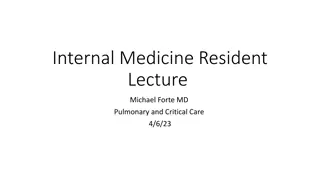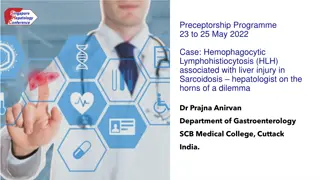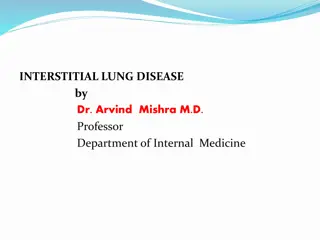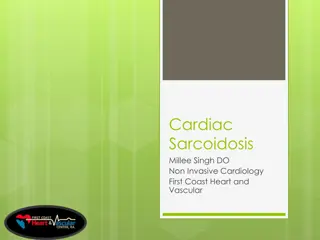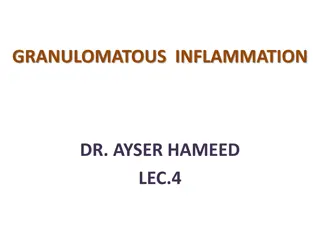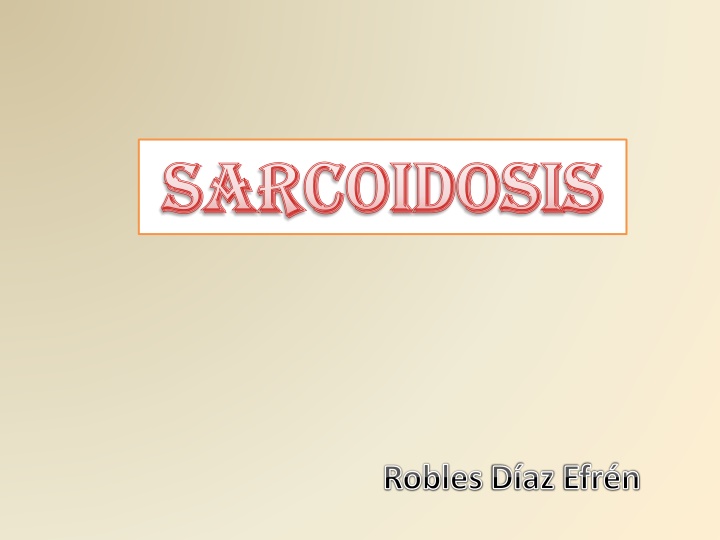
Understanding Sarcoidosis: Overview, Symptoms, Diagnosis, and Treatment
Explore the comprehensive guide on Sarcoidosis, a multisystem inflammatory disease, covering its history, immunological findings, epidemiology, genetics, etiology, pathogenesis, clinical manifestations, diagnosis, and treatment options. Learn about the genetic predisposition, immune responses, and treatment approaches for this condition affecting various organs.
Download Presentation

Please find below an Image/Link to download the presentation.
The content on the website is provided AS IS for your information and personal use only. It may not be sold, licensed, or shared on other websites without obtaining consent from the author. If you encounter any issues during the download, it is possible that the publisher has removed the file from their server.
You are allowed to download the files provided on this website for personal or commercial use, subject to the condition that they are used lawfully. All files are the property of their respective owners.
The content on the website is provided AS IS for your information and personal use only. It may not be sold, licensed, or shared on other websites without obtaining consent from the author.
E N D
Presentation Transcript
Sarcoidosis Sarcoidosis Robles D az Efr n
HISTORIA Quien acu el t rmino sarkoid (por su semejanza a lesiones sarcomatosas) 1898 enfermedad, J. Hutchinson J. Schaumann Describi por primera vez, bajo el nombre de psoriasis papilar en 1877 al reunir entre 1914 y 1924 todas las localizaciones del proceso, bajo el nombre de linfogranulomatosis benigna Describe el car cter multisist mico a la C. Boeck (1998-1877)
Se presenta Hallazgos Que es? con: Inmunol gicos Depresi n de la inmunidad celular y Infiltraci n pulmonar, lesiones cut neas y respuesta inmune de Th1 en los sitios La Sarcoidosis es una enfermedad multisist mica. oculares. donde se localiza la Enfermedad.
Epidemiologa y gentica La predisposici n a adquirir Sarcoidosis parece gen ticamente determinada, sin embargo solo un peque o grupo de alelos de HLA han sido posibles de identificar asociados a la susceptibilidad de la enfermedad, tanto de clase I (HLA B7, HLA B8), como de clase II (HLA-DR3, DR5, DR6, DR8, DR9, DR14, DR15 y DR17)[9].
Etiologa C lulas T y macr fagos Factores quimiot cticos y citoquinas Aire inspirado Alveolitis linfoc tica Respuesta inflamatoria Granuloma Las c lulas T activadas

